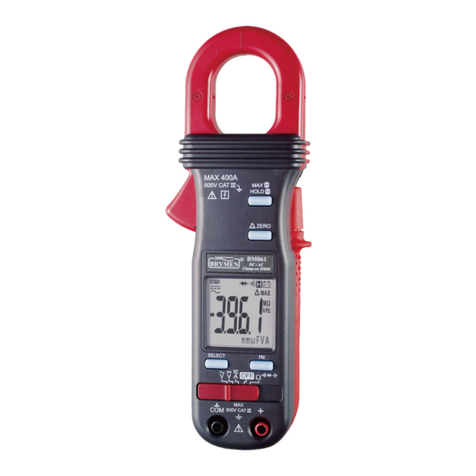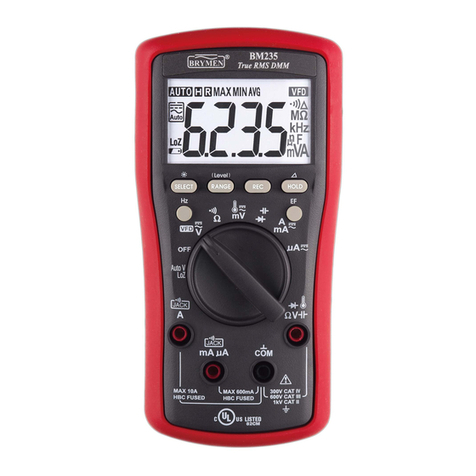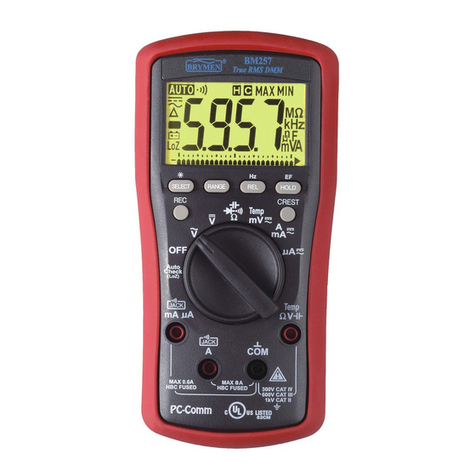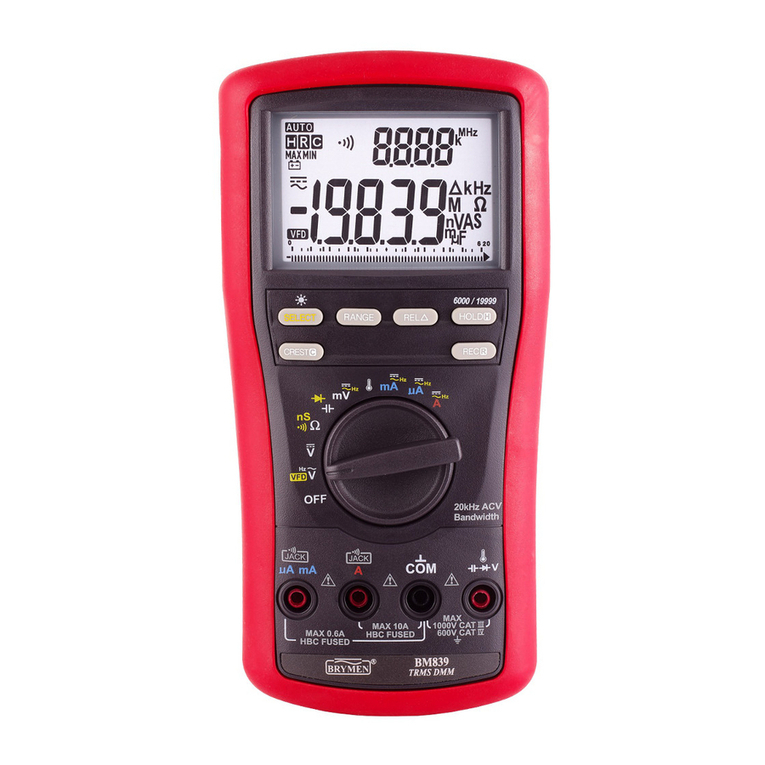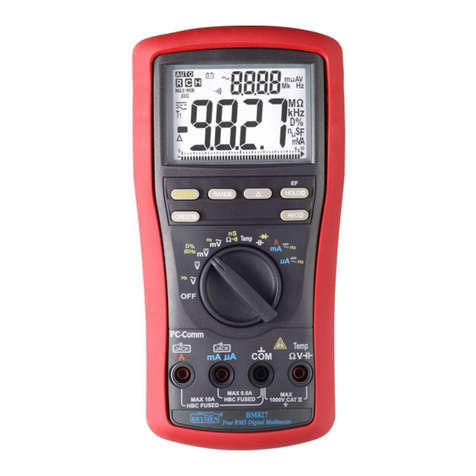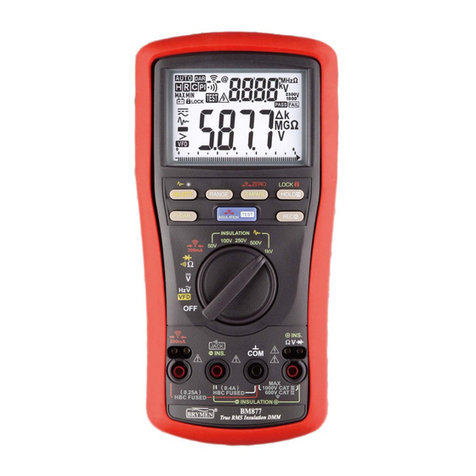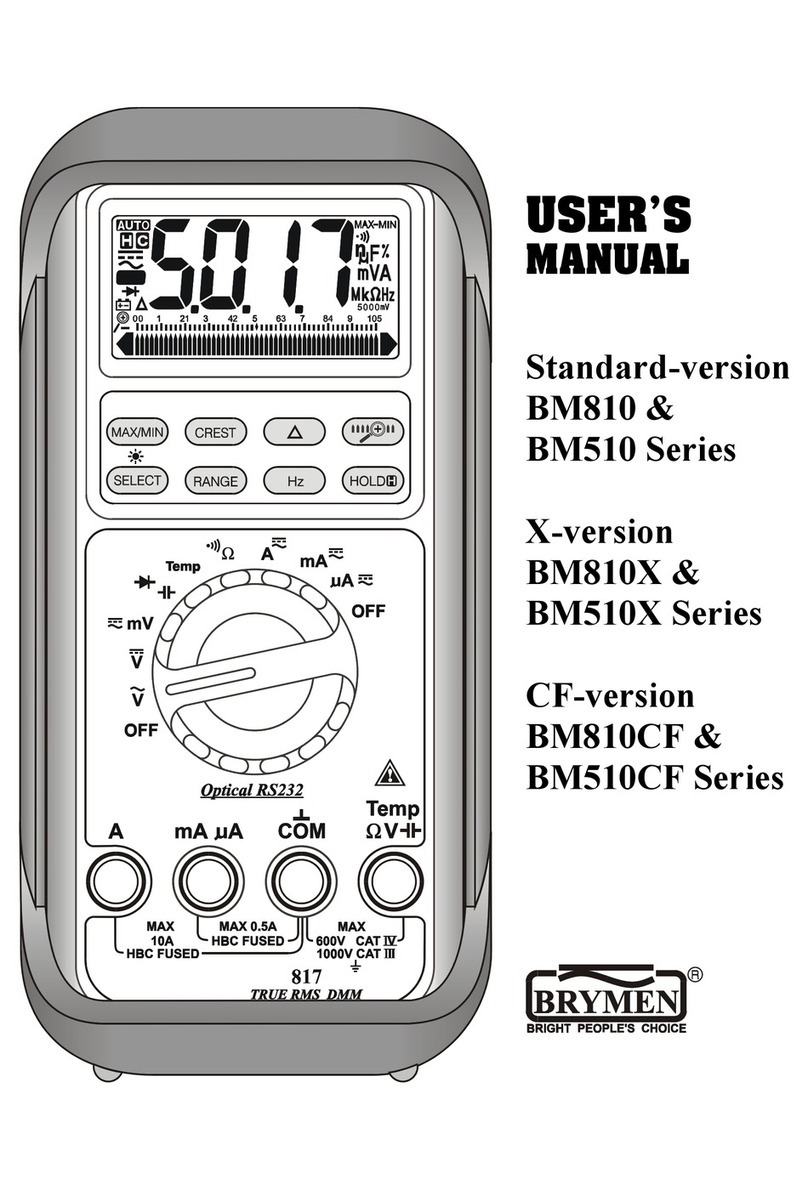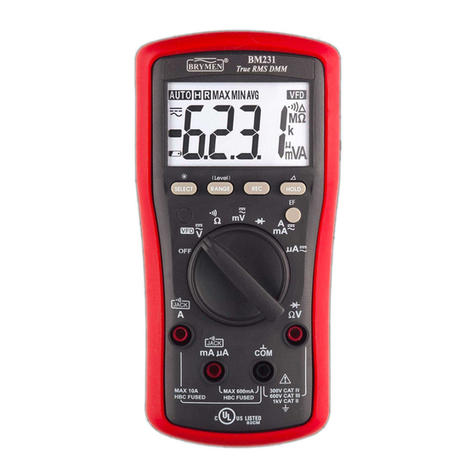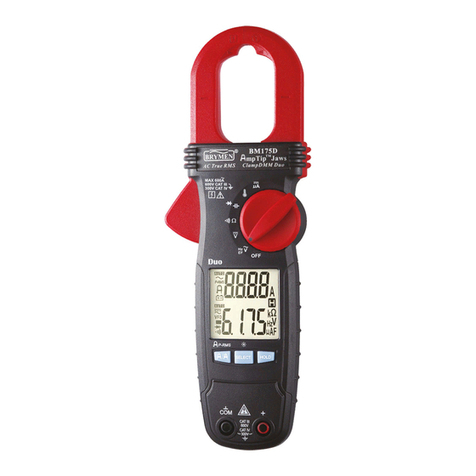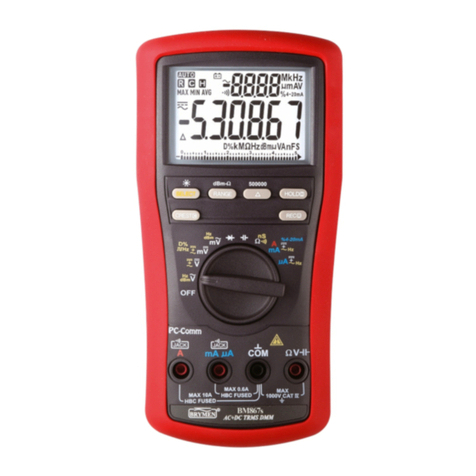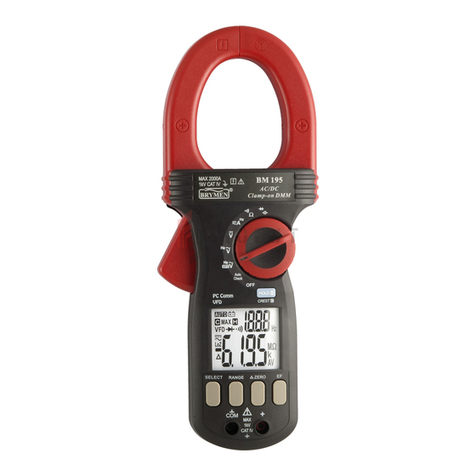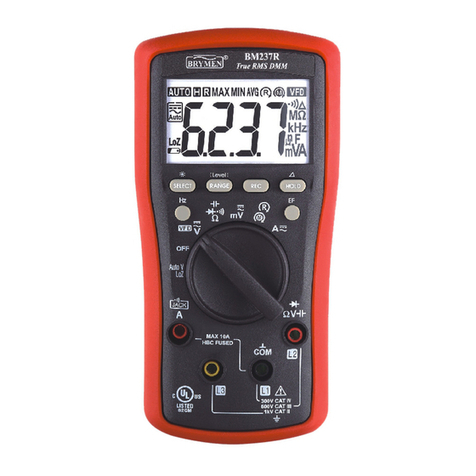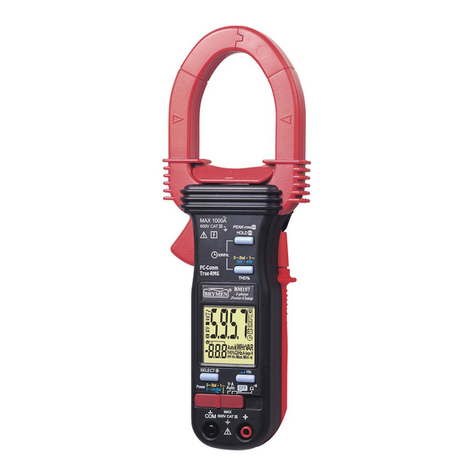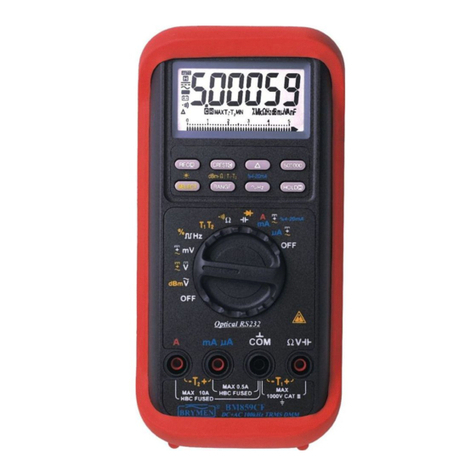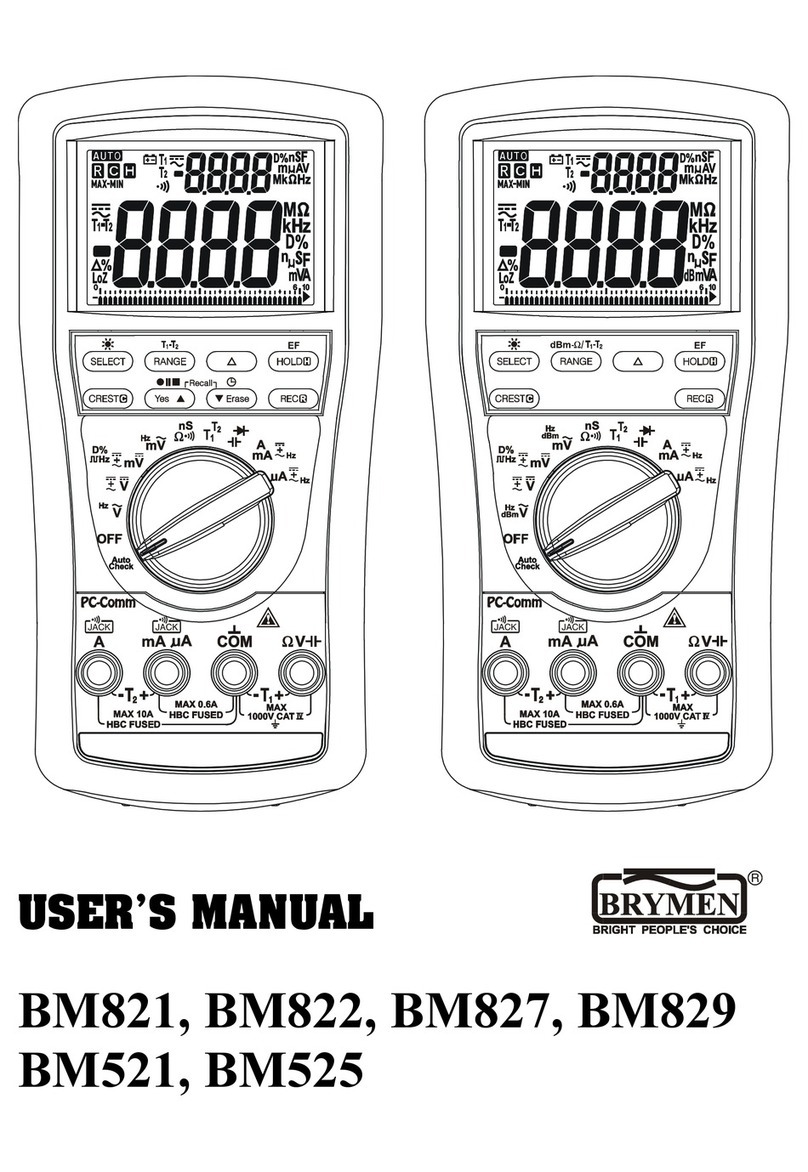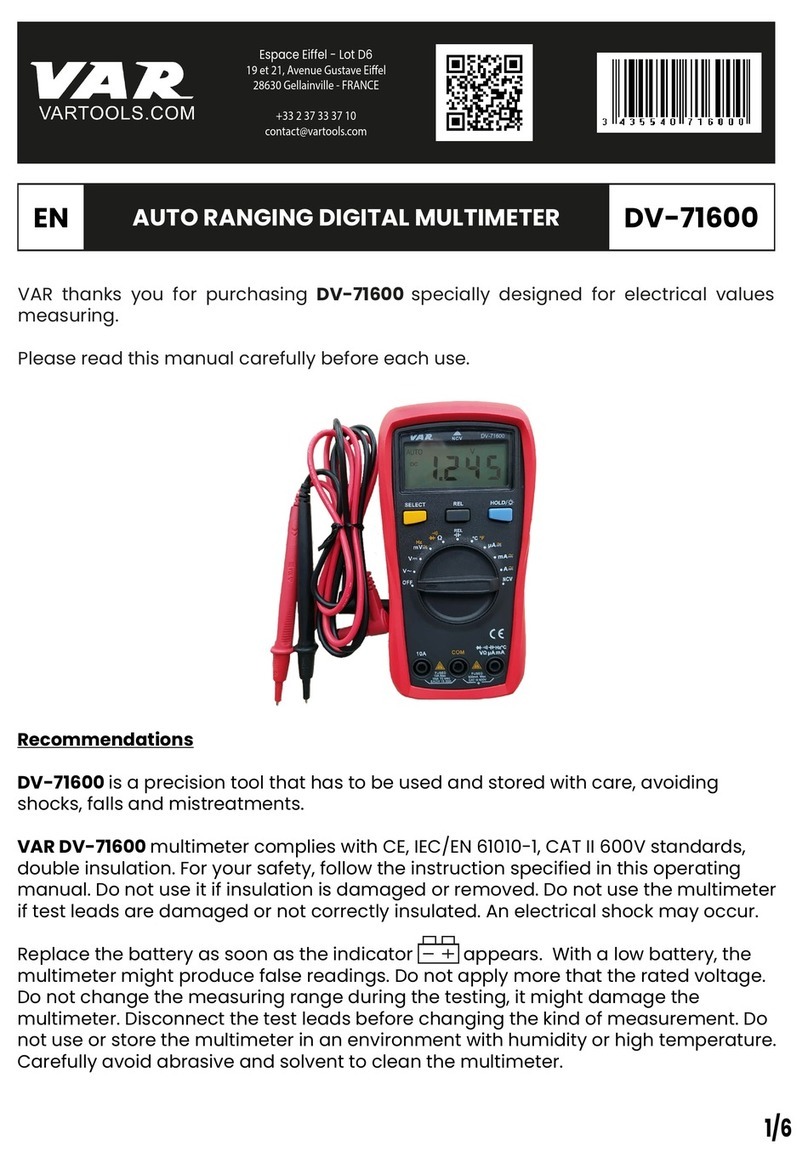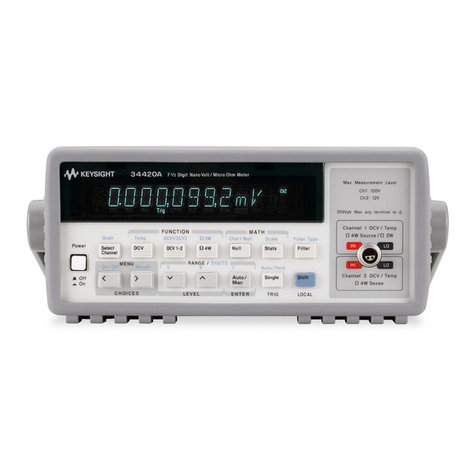-Electric Field EF-Detection (Models 27s, 25s & 25a only)
From AutoCheckTM with “Auto” being displayed, press the SELECT button momentarily 2 times to select EF-
Detection feature. The meter displays “EF” when it is ready. Signal strength is indicated as a series of bar-graph
segments on the display and variable beep tones.
●Non-Contact EF-Detection: An antenna is located at the top left corner of the meter, which detects electric field
surrounds current-carrying conductors. It is ideal for tracing live wiring connections, locating wiring breakage and to
distinguish between live or earth connections.
●Probe-Contact EF-Detection: For more precise indication of live wires, such as distinguishing between live and
ground sockets, use the Red (+) test probe for direct contact measurements.
-V and of AutoCheckTM In Manual Selection (Models 27s, 25s & 25a only)
From AutoCheckTM with “Auto” being displayed, press the SELECT button momentarily 3 times to select ACV, 4
times to select DCV and 5 times to select Resistance () functions of AutoCheckTM. Such selected function
remains auto-ranging.
-Frequency And Capacitance (Models 27s, 25s & 25a only)
From AutoCheckTM with “Auto” being displayed, press the SELECT button momentarily 6 times to select
Frequency (Hz), 7 times to select Capacitance (F) functions and 8 times to return to AutoCheckTM mode.
Note:
*Unlike the Line Level Hz Frequency function (for Model 27sonly) as stated, this (Common) Hz Frequency
function is set only at the highest input sensitivity mainly for measuring small electronic signals of below 20VAC
rms.
4-2) OTHER FUNCTIONS
-DCV, ACV & Line-Level Hz functions (Model 27sonly)
Rotate the rotary selector to the V position selects common impedance (Hi-Z) voltage measurements. DCV is the
default function. Press SELECT button momentarily to select ACV. The AC annunciator “ ” turns on. Press
momentarily again to activate the Line-Level Hz function.
Note:
*Line-Level Hz input sensitivity varies automatically with ACV range selected when Line-Level Hz is selected. AC
6V range has the highest and AC 600V range has the lowest sensitivity. Measuring the signal in ACV function
WHILE selecting Line-Level Hz function in that ACV range automatically sets the most appropriate sensitivity for
higher voltage applications. This can avoid electrical noises as in 110/220V line voltage applications for example. If
the reading shows zero due to insufficient signal levels, select Line-Level Hz function BEFORE making
measurements (at AC 6V range) will set the highest sensitivity.
-Diode & 600functions (Model 27sonly)
Rotate the rotary selector to the /600position.
Diode test is the default function. The reading shows the approximate voltage drop across the test leads. Normal
forward voltage drop (forward biased) for a good silicon diode is between 0.400V to 0.900V. A reading higher than
that indicates a leaky diode (defective). A zero reading indicates a shorted diode (defective), and the meter will
give a long beep as continuity warning. An OL indicates an open diode (defective). Reverse the test leads
connections (reverse biased) across the diode. The digital display shows OL if the diode is good. Any other
readings indicate the diode is resistive or shorted (defective).
Press SELECT button momentarily selects the lowest 600range for lower resistance measurements. It is an
extended range to complement the AutoCheckTM Resistance () function.
-DC-A & AC-A Micro-Amp functions (Model 27sonly)
Rotate the rotary selector to the A position. The display-reading unit is in A although there is no unit
annunciator on the display. DC-A is the default function. There is no annunciator for DC. Press SELECT button
